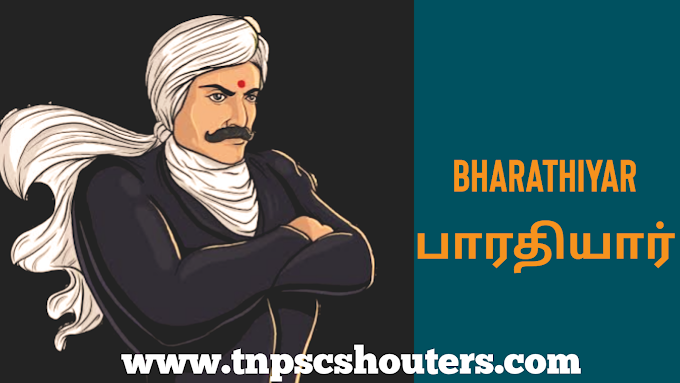TAMIL
- நேதாஜி சுபாஷ் சந்திர போஸ் ஒரு இந்திய தேசியவாதி ஆவார், இந்தியா மீதான தேசபக்தி பல இந்தியர்களின் இதயங்களில் ஒரு முத்திரையை பதித்துள்ளது.
- அவர் 'ஆசாத் ஹிந்த் ஃபவுஜ்' நிறுவனர் என்று பிரபலமாக அறியப்படுகிறார், மேலும் அவரது புகழ்பெற்ற முழக்கம் 'தும் முஜே கூன் தோ, மைன் தும்ஹே ஆசாதி துங்கா' என்பதாகும்.
- நேதாஜி சுபாஷ் சந்திர போஸ் 1897 ஆம் ஆண்டு ஜனவரி 23 ஆம் தேதி ஒரிசா மாநிலம் கட்டாக்கில் பிறந்தார் மற்றும் விமான விபத்தில் தீக்காயம் அடைந்து தைவானில் உள்ள மருத்துவமனையில் 18 ஆகஸ்ட் 1945 இல் இறந்தார்.
- சுபாஷ் சந்திர போஸ் அசாதாரண தலைமைத்துவ திறன் மற்றும் கவர்ச்சியான பேச்சாளர் கொண்ட மிகவும் செல்வாக்கு மிக்க சுதந்திர போராட்ட வீரராக கருதப்படுகிறார்.
- 'தும் முஜே கூன் தோ, மைன் தும்ஹே ஆசாதி துங்கா', 'ஜெய் ஹிந்த்' மற்றும் 'டெல்லி சலோ' ஆகியவை அவரது பிரபலமான முழக்கங்கள்.
- அவர் ஆசாத் ஹிந்த் ஃபவுஜை உருவாக்கி, இந்தியாவின் சுதந்திரப் போராட்டத்திற்கு பல பங்களிப்புகளைச் செய்தார். அவர் சுதந்திரம் பெற பயன்படுத்திய போர்க்குணமிக்க அணுகுமுறை மற்றும் அவரது சோசலிச கொள்கைகளுக்காக அறியப்பட்டவர்.
- INC ஐ ஒரு சக்திவாய்ந்த அகிம்சை அமைப்பாக மாற்றிய மகாத்மா காந்தியால் தொடங்கப்பட்ட ஒத்துழையாமை இயக்கத்தில் அவர் சேர்ந்தார்.
- இயக்கத்தின் போது, மகாத்மா காந்தியால் அவரது அரசியல் குருவாக மாறிய சித்தரஞ்சன் தாஸுடன் இணைந்து பணியாற்றுமாறு அவருக்கு ஆலோசனை வழங்கப்பட்டது.
- அதன் பிறகு, அவர் இளைஞர் கல்வியாளராகவும், வங்காள காங்கிரஸ் தொண்டர்களின் தளபதியாகவும் ஆனார். ‘ஸ்வராஜ்’ என்ற பத்திரிகையைத் தொடங்கினார்.
- 1927 இல், சிறையிலிருந்து விடுதலையான பிறகு, போஸ் காங்கிரஸ் கட்சியின் பொதுச் செயலாளராக ஆனார் மற்றும் சுதந்திரத்திற்காக ஜவஹர்லால் நேருவுடன் இணைந்து பணியாற்றினார்.
- 1938 இல் அவர் இந்திய தேசிய காங்கிரஸின் தலைவராக தேர்ந்தெடுக்கப்பட்டார் மற்றும் ஒரு தேசிய திட்டமிடல் குழுவை உருவாக்கினார், இது பரந்த தொழில்மயமாக்கல் கொள்கையை வகுத்தது.
- இருப்பினும், இது காந்திய பொருளாதார சிந்தனையுடன் ஒத்துப்போகவில்லை, இது குடிசைத் தொழில்கள் மற்றும் நாட்டின் சொந்த வளங்களைப் பயன்படுத்துவதன் மூலம் பயனடைகிறது.
- போஸ் 1939 இல் காந்தியப் போட்டியாளரை மறுதேர்தலில் தோற்கடித்தபோது அவரது நியாயம் வந்தது. ஆயினும்கூட, காந்தியின் ஆதரவு இல்லாததால் "கிளர்ச்சி ஜனாதிபதி" ராஜினாமா செய்ய வேண்டிய கட்டாயத்தில் இருந்தார்.
- அகில இந்திய பார்வர்டு பிளாக் என்பது இந்தியாவில் ஒரு இடதுசாரி தேசியவாத அரசியல் கட்சியாகும், இது 1939 இல் சுபாஷ் சந்திர போஸ் தலைமையில் இந்திய காங்கிரசுக்குள் ஒரு பிரிவாக உருவானது. காங்கிரஸில் இடதுசாரிக் கருத்துக்களால் நன்கு அறியப்பட்டவர்.
- ஃப்ரோவர்ட் பிளாக்கின் பிரதான நோக்கம் காங்கிரஸ் கட்சியின் அனைத்து தீவிரக் கூறுகளையும் கொண்டு வர வேண்டும் என்பதுதான்.
- சமத்துவம் மற்றும் சமூக நீதிக் கொள்கைகளைப் பின்பற்றுவதன் மூலம் இந்தியாவின் முழுமையான சுதந்திரத்தின் அர்த்தத்தை அவர் பரப்ப முடியும்.
- இரண்டாம் உலகப் போரின் போது சுதந்திரத்திற்கான போராட்டத்தில் ஒரு முக்கியமான வளர்ச்சியானது, இந்திய தேசிய இராணுவம் அல்லது ஐஎன்ஏ என அழைக்கப்படும் ஆசாத் ஹிந்த் ஃபவுஜின் உருவாக்கம் மற்றும் செயல்பாடுகள் ஆகும்.
- ராஷ் பிஹாரி போஸ் என்ற இந்தியப் புரட்சியாளர், இந்தியாவில் இருந்து தப்பி வந்து பல ஆண்டுகளாக ஜப்பானில் வசித்து வந்தார், தென்கிழக்கு ஆசிய நாடுகளில் வாழும் இந்தியர்களின் ஆதரவுடன் இந்திய சுதந்திரக் கழகத்தை நிறுவினார்.
- ஜப்பான் பிரிட்டிஷ் படைகளை தோற்கடித்து தென்கிழக்கு ஆசியாவின் அனைத்து நாடுகளையும் ஆக்கிரமித்தபோது, லீக் இந்திய போர்க் கைதிகள் மத்தியில் இருந்து இந்திய தேசிய இராணுவத்தை பிரிட்டிஷ் ஆட்சியிலிருந்து இந்தியாவை விடுவிக்கும் நோக்கத்துடன் உருவாக்கியது.
- பிரிட்டிஷ் இந்திய ராணுவத்தில் அதிகாரியாக இருந்த ஜெனரல் மோகன் சிங், இந்த ராணுவத்தை ஒழுங்கமைப்பதில் முக்கிய பங்கு வகித்தார்.
- இதற்கிடையில், சுபாஷ் சந்திர போஸ் 1941 இல் இந்தியாவிலிருந்து தப்பித்து ஜெர்மனிக்குச் சென்று இந்தியாவின் சுதந்திரத்திற்காக பணியாற்றினார்.
- 1943 ஆம் ஆண்டில், அவர் இந்திய சுதந்திர லீக்கிற்கு தலைமை தாங்குவதற்காக சிங்கப்பூர் வந்தார் மற்றும் இந்திய தேசிய இராணுவத்தை (ஆசாத் ஹிந்த் ஃபவுஜ்) மீண்டும் கட்டியெழுப்பினார்.
- ஆசாத் ஹிந்த் ஃபவுஜ் சுமார் 45,000 வீரர்களைக் கொண்டிருந்தது, அவர்களில் இந்திய போர்க் கைதிகள் மற்றும் தென்கிழக்கு ஆசியாவின் பல்வேறு நாடுகளில் குடியேறிய இந்தியர்களும் இருந்தனர்.
- 1943 ஆம் ஆண்டு அக்டோபர் 21 ஆம் தேதி, இப்போது நேதாஜி என்று அழைக்கப்படும் சுபாஸ் போஸ், சிங்கப்பூரில் சுதந்திர இந்தியாவின் (ஆசாத் ஹிந்த்) தற்காலிக அரசாங்கத்தை அமைப்பதாக அறிவித்தார்.
- நேதாஜி ஜப்பானியர்களால் ஆக்கிரமிக்கப்பட்ட அந்தமானுக்குச் சென்று அங்கு இந்தியாவின் கொடியை ஏற்றினார். 1944 ஆம் ஆண்டின் முற்பகுதியில், ஆசாத் ஹிந்த் ஃபௌஜ் (INA) இன் மூன்று பிரிவுகள், இந்தியாவில் இருந்து ஆங்கிலேயர்களை வெளியேற்றுவதற்காக
- இந்தியாவின் வடகிழக்கு பகுதிகள் மீதான தாக்குதலில் பங்கேற்றன. ஆசாத் ஹிந்த் ஃபவுஜின் மிக முக்கியமான அதிகாரிகளில் ஒருவரான ஷா நவாஸ் கானின் கூற்றுப்படி, இந்தியாவுக்குள் நுழைந்த வீரர்கள் தரையில் தங்களைத் தாங்களே சாய்த்துக்கொண்டு தங்கள் தாய்நாட்டின் புனித மண்ணை உணர்ச்சியுடன் முத்தமிட்டனர். இருப்பினும், ஆசாத் ஹிந்த் ஃபௌஜ் மூலம் இந்தியாவை விடுவிக்கும் முயற்சி தோல்வியடைந்தது.
- இந்திய தேசியவாத இயக்கம் ஜப்பானிய அரசாங்கத்தை இந்தியாவின் நண்பனாக பார்க்கவில்லை. அதன் அனுதாபங்கள் ஜப்பானின் ஆக்கிரமிப்புக்கு பலியாகிய அந்த நாட்டு மக்களுக்கு இருந்தது.
- எவ்வாறாயினும், ஜப்பானின் ஆதரவுடன் ஆசாத் ஹிந்த் ஃபவுஜ் மற்றும் இந்தியாவிற்குள் ஒரு கிளர்ச்சியின் உதவியுடன், இந்தியாவில் பிரிட்டிஷ் ஆட்சியை முடிவுக்கு கொண்டு வர முடியும் என்று நேதாஜி நம்பினார்.
- ‘டெல்லி சலோ’ முழக்கம் மற்றும் ஜெய் ஹிந்த் என்ற முழக்கத்துடன் கூடிய ஆசாத் ஹிந்த் ஃபவுஜ், நாட்டிற்கு உள்ளேயும் வெளியேயும் உள்ள இந்தியர்களுக்கு உத்வேகத்தை அளித்தது. நேதாஜி தென்கிழக்கு ஆசியாவில் வாழும் அனைத்து மதங்கள் மற்றும் பிராந்தியங்களைச் சேர்ந்த இந்தியர்களுடன் இந்திய சுதந்திரத்திற்காக ஒன்று திரண்டார்.
- இந்திய சுதந்திரத்திற்கான நடவடிக்கைகளில் இந்தியப் பெண்களும் முக்கியப் பங்காற்றினர். கேப்டன் லக்ஷ்மி சுவாமிநாதன் தலைமையில் ஆசாத் ஹிந்த் ஃபௌஜ் என்ற பெண்கள் படைப்பிரிவு உருவாக்கப்பட்டது.
- இது ராணி ஜான்சி படைப்பிரிவு என்று அழைக்கப்பட்டது. ஆசாத் ஹிந்த் ஃபவுஜ் இந்திய மக்களுக்கு ஒற்றுமை மற்றும் வீரத்தின் அடையாளமாக மாறியது.
- இந்தியாவின் சுதந்திரப் போராட்டத்தின் தலைசிறந்த தலைவர்களில் ஒருவராக இருந்த நேதாஜி, ஜப்பான் சரணடைந்த சில நாட்களுக்குப் பிறகு விமான விபத்தில் கொல்லப்பட்டதாக அறிவிக்கப்பட்டது.
- இரண்டாம் உலகப் போர் 1945 இல் பாசிச ஜெர்மனி மற்றும் இத்தாலியின் தோல்வியுடன் முடிவுக்கு வந்தது. லட்சக்கணக்கான மக்கள் போரில் கொல்லப்பட்டனர்.
- போர் முடிவடையும் தருவாயில், இத்தாலியும் ஜெர்மனியும் ஏற்கனவே தோற்கடிக்கப்பட்டபோது, அமெரிக்கா ஜப்பான்-ஹிரோஷிமா மற்றும் நாகசாகி ஆகிய இரண்டு நகரங்கள் மீது அணுகுண்டுகளை வீசியது.
- ஒரு சில நிமிடங்களில், இந்த நகரங்கள் தரையில் எரிக்கப்பட்டன மற்றும் 200,000 க்கும் அதிகமான மக்கள் கொல்லப்பட்டனர். இதைத் தொடர்ந்து ஜப்பான் சரணடைந்தது.
- அணுகுண்டுகளின் பயன்பாடு போரை முடிவுக்குக் கொண்டுவந்தாலும், அது உலகில் புதிய பதட்டங்களுக்கு வழிவகுத்தது மற்றும் அனைத்து மனிதகுலத்தையும் அழிக்கக்கூடிய மேலும் மேலும் கொடிய ஆயுதங்களை தயாரிப்பதற்கான புதிய போட்டிக்கு வழிவகுத்தது.
- As per an official, the celebration for Republic Day from this year will start on January 23 instead of January 24 to include the birth anniversary of Netaji Subhas Chandra Bose. PM Narendra Modi government "focus to commemorate important aspects of our history and culture."
- Netaji Subhas Chandra Bose was an Indian Nationalist whose patriotism towards India has left a mark in the hearts of many Indians. He is famously known as the founder of 'Azad Hind Fauj' and his famous slogan is 'Tum Mujhe Khoon Do, Main Tumhe Aazadi Dunga'.
- Netaji Subhas Chandra Bose was born on 23 January,1897 in Cuttack, Orissa and he died on 18 August,1945, in a hospital in Taiwan after suffering from burn injuries sustained in a plane crash.
- Subhas Chandra Bose is considered the most influential freedom fighter with extraordinary leadership skills and a charismatic orator.
- His famous slogans are 'tum mujhe khoon do, main tumhe aazadi dunga', 'Jai Hind', and 'Delhi Chalo'. He formed Azad Hind Fauj and made several contributions to India's freedom struggle.
- He is known for his militant approach that he used to gain independence and for his socialist policies.
- He joined Non-Cooperation Movement which was started by Mahatama Gandhi who made INC a powerful non-violent organization. During the movement, he was advised by Mahatma Gandhi to work with Chittaranjan Das who became his political guru.
- After that, he became a youth educator and commandant of the Bengal Congress volunteers. He started the newspaper 'Swaraj'. In 1927, after being released from prison, Bose became general secretary of the Congress party and worked with Jawaharlal Nehru for independence.
- In 1938 he was elected president of the Indian National Congress and formed a national planning committee, which formulated a policy of broad industrialization. However, this did not harmonize with Gandhian economic thought, which clung to the notion of cottage industries and benefiting from the use of the country’s own resources.
- Bose’s vindication came in 1939 when he defeated a Gandhian rival for reelection. Nonetheless, the “rebel president” felt bound to resign because of the lack of Gandhi’s support.
- All India Forward Bloc was a left-wing nationalist political party in India that emerged as a faction within the India Congress in 1939, led by Subhas Chandra Bose. He was well known for his leftist views in Congress.
- The prime objective of the Froward Bloc was to bring all radical elements of the Congress party. So that he could spread the meaning of complete independence of India with adherence to the application of principles of equality and social justice.
- An important development in the struggle for freedom during the Second World War was the formation and activities of the Azad Hind Fauj, also known as the Indian National Army, or INA.
- Rash Behari Bose, an Indian revolutionary who had escaped from India and had been living in Japan for many years, set up the Indian independence league with the support of Indians living in the countries of south-east Asia.
- When Japan defeated the British armies and occupied almost all the countries of south-East Asia, the league formed the Indian National Army from among the Indian prisoners of war with the aim of liberating India from British rule. General Mohan Singh, who had been an officer in the British Indian army, played an important role in organizing this army.
- In the meantime, Subhas Chandra Bose had escaped from India in 1941 and gone to Germany to work for India’s Independence. In 1943, he came to Singapore to lead the Indian Independence League and rebuild the Indian National Army (Azad Hind Fauj) to make it an effective instrument for the freedom of India.
- The Azad Hind Fauj comprised about 45,000 soldiers, among who were Indian prisoners of war as well as Indians who were settled in various countries of south-east Asia.
- On 21 October 1943, Subhas Bose, who was now popularly known as Netaji, proclaimed the formation of the provisional government of independent India (Azad Hind) in Singapore. Netaji went to the Andaman which had been occupied by the Japanese and hoisted there the flag of India.
- In early 1944, three units of the Azad Hind Fauj (INA) took part in the attack on the north-eastern parts of India to oust the British from India. According to Shah Nawaz Khan, one of the most prominent officers of the Azad Hind Fauj, the soldiers who had entered India laid themselves flat on the ground and passionately kissed the sacred soil of their motherland. However, the attempt to liberate India by the Azad Hind Fauj failed.
- The Indian nationalist movement did not view the Japanese government as a friend of India. Its sympathies were with the people of those countries which had fallen victims to Japan’s aggression.
- Netaji, however, believed that with the help of the Azad Hind Fauj, supported by Japan, and a revolt inside India, the British rule over India could be ended.
- The Azad Hind Fauj, with the slogan of ‘Delhi Chalo’ and the salutation Jai Hind was a source of inspiration to Indians, inside and outside the country. Netaji rallied together with the Indians of all religions and regions, living in southeast Asia, for the cause of India’s freedom.
- Indian women also played an important role in the activities for the freedom of India. A women’s regiment of Azad Hind Fauj was formed, which was under the command of Captain Lakshmi Swaminathan.
- It was called the Rani Jhansi regiment. The Azad Hind Fauj became the symbol of unity and heroism to the people of India. Netaji, who had been one of the greatest leaders of India’s struggle for freedom, was reported killed in an air crash a few days after Japan had surrendered.
- The Second World War ended in 1945 with the defeat of fascist Germany and Italy. Millions of people were killed in the war. When the war was nearing its end and Italy and Germany had already been defeated, the U.S.A. dropped atom bombs on the two cities of Japan-Hiroshima and Nagasaki.
- Within a few moments, these cities were burnt to the ground and over 200,000 people were killed. Japan surrendered soon after this. Though the use of the atom bombs brought the war to a close, it led to new tensions in the world and to a new competition for making more and more deadly weapons that might destroy all mankind.











Very use full article 👏
ReplyDelete